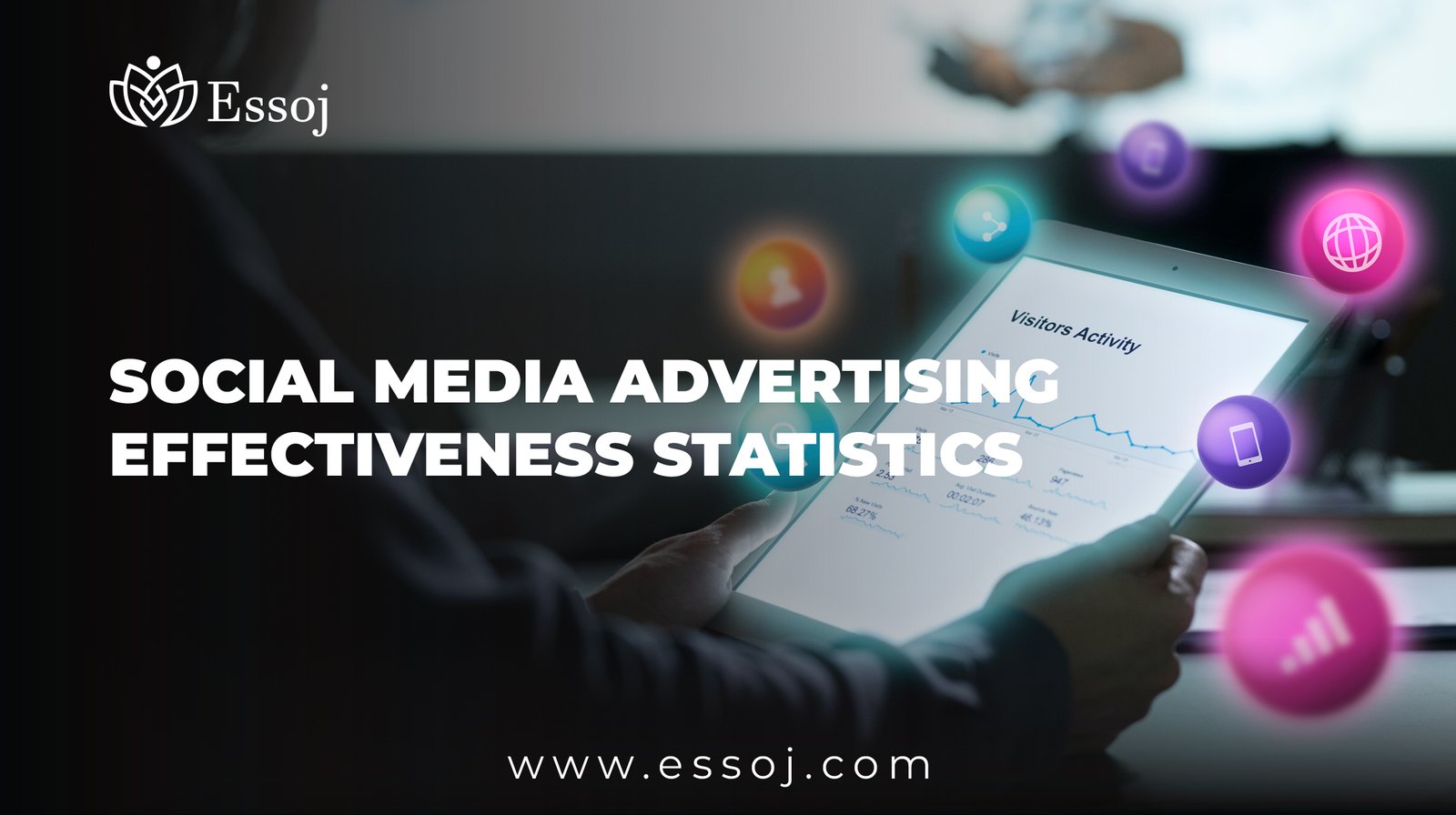In the fast-paced world of digital marketing, understanding how well your advertising efforts perform is crucial. For businesses in the UK, leveraging social media platforms has become one of the most effective ways to reach customers. But to truly make the most of these channels, it helps to grasp the hard facts—Social Media Advertising Effectiveness Statistics.
This article dives deep into the latest UK-centric statistics, explains why social media advertising works so well, and offers a clear, step-by-step guide to applying these insights. Whether you’re a small business owner, a marketing professional, or simply curious about digital trends, these stats will help you understand the power of social media ads.
The Growing Power of Social Media in the UK
Social media is no longer just a place to catch up with friends or share pictures. It’s become a vital tool for brands to connect with audiences and build relationships. In the UK, over 80% of the population actively uses platforms like Facebook, Instagram, LinkedIn, Twitter, and TikTok. This represents a massive potential audience for advertisers.
But what makes social media advertising stand out compared to traditional marketing? The answer lies in how these platforms allow brands to connect directly with specific audiences. Through precise targeting and real-time feedback, businesses can tailor their messages to fit the right people at the right time.
Key Social Media Advertising Effectiveness Statistics in the UK
Let’s unpack some of the most important figures that reveal the true impact of social media ads:
1. Engagement That Outshines Other Channels
One of the most compelling reasons to invest in social media ads is the high level of user engagement. UK users spend an average of 1 hour and 40 minutes daily on social media. During this time, they’re not just passive observers but active participants who comment, like, share, and click.
Studies show social media ads have engagement rates that are five times higher than standard digital display ads. This means your audience is much more likely to interact with your content, increasing brand awareness and trust.
2. Outstanding Return on Investment (ROI)
ROI is a marketer’s favorite metric. And in the UK, many businesses report a return on social media advertising investment of 400% or higher. For every £1 spent, they earn back at least £4 in sales or leads.
This excellent ROI stems from targeted ad placements, which reduce wasted spending and help businesses focus on their ideal customers.
3. Mobile: The Dominant Platform
More than 90% of UK social media users access these platforms via mobile devices. Mobile-friendly ads, especially those formatted for vertical viewing like Instagram Stories or TikTok videos, receive better attention.
It’s reported that 70% of mobile users take an action (such as visiting a website or purchasing a product) after seeing a social media ad, underscoring the importance of mobile optimization.
4. Video Content Reigns Supreme
Video ads perform exceptionally well across all platforms. In the UK, video content on social media generates twelve times more shares than text and image posts combined. This virality means video ads can quickly reach broader audiences at minimal cost.
5. Influence of Social Media Influencers
UK consumers increasingly rely on recommendations from trusted influencers. In fact, 60% of purchasing decisions are influenced by social media personalities, especially in niches like fashion, beauty, and tech.
Partnering with influencers not only boosts ad authenticity but also expands your reach to loyal followers.
6. The Rise of Social Commerce
A growing trend in the UK is social commerce, where users purchase products directly from social media apps. Over 40% of social media users in the UK have made a purchase through social platforms, making it an essential avenue for advertisers.
Why These Social Media Advertising Effectiveness Statistics Matter for Your Business
Numbers alone don’t tell the full story. These statistics help clarify why social media advertising isn’t just a passing trend but a cornerstone of successful marketing in the UK.
For example, consider Emma, a marketing manager for a mid-sized fashion brand in London. By analysing these stats, Emma realized video ads targeted at mobile users were driving the most traffic to their website. She shifted her budget accordingly, working with influencers to create authentic content, and saw a 300% increase in online sales in just six months.
This example highlights how understanding Social Media Advertising Effectiveness Statistics allows businesses to allocate their budgets more effectively, experiment with formats, and ultimately achieve better results.
Step-by-Step Guide: Using These Stats to Build Winning Social Media Ads
Ready to use these statistics for your benefit? Here’s a practical step-by-step guide to building social media ads that work, tailored for the UK market.
Step 1: Define Your Goals Clearly
Start by asking: What do you want from your social media ads? More sales, greater brand awareness, or increased website traffic? Setting specific, measurable goals helps keep your campaigns focused and allows you to evaluate success.
Step 2: Know Your Audience Inside Out
Use UK demographic data and insights from platforms to understand your audience’s age, interests, location, and behaviours. For example, younger users might prefer TikTok, while professionals lean towards LinkedIn.
Step 3: Choose the Right Platforms
Not all social media platforms are created equal. Prioritize channels where your target audience is most active. The UK has a strong presence on Facebook and Instagram, but TikTok is rapidly growing in popularity among younger demographics.
Step 4: Invest in Engaging, Mobile-Friendly Content
Given the dominance of mobile users, create ads optimized for smartphones. Focus on video content that’s short, engaging, and easily shareable. Remember, videos get 12 times more shares, so make them count!
Step 5: Utilize Influencers for Authenticity
Collaborate with UK-based influencers who genuinely resonate with your brand. This helps create trust and widens your reach in a natural way.
Step 6: Track, Analyze, and Adjust
Use platform analytics to monitor key metrics like reach, engagement, CTR, and conversion rates. Don’t hesitate to tweak your targeting, budget, or creative based on what the data tells you.
Step 7: Leverage Social Commerce Features
If you sell products, consider using features like Instagram Shopping or Facebook Shops. These allow users to purchase without leaving the platform, increasing the likelihood of impulse buys.
Anecdote: How a Local Bakery in Brighton Boosted Sales with Social Media Ads
Jenny runs a quaint bakery in Brighton. Initially relying on word of mouth and local flyers, Jenny decided to invest in social media ads after researching Social Media Advertising Effectiveness Statistics.
She created short Instagram videos showcasing her delicious pastries and targeted local users interested in food and baking. Partnering with a local food blogger gave her ads an extra boost. Within three months, foot traffic increased by 40%, and online orders soared.
Jenny’s story is a great example of how data-driven social media advertising can transform even small businesses.
Common Challenges and How to Overcome Them
While the stats paint a promising picture, many businesses face challenges:
- Ad Fatigue: Users may tire of seeing the same ads. Solution? Regularly refresh your creative and test different formats.
- Budget Constraints: Not every business can afford huge ad spends. Solution? Start small, focus on highly targeted ads, and scale up as results improve.
- Measuring Impact: Some struggle to track the true effect of ads. Solution? Use proper tracking tools and define clear KPIs from the start.
Final Thoughts: The Relevance of Social Media Advertising Effectiveness Statistics
Understanding Social Media Advertising Effectiveness Statistics is not just about numbers—it’s about making smarter marketing decisions in a competitive UK market. These stats provide valuable insights into consumer behavior, platform usage, and the types of content that work best.
By applying this knowledge, businesses can build more effective campaigns, maximize their budgets, and connect with customers in meaningful ways. Whether you’re a startup or an established company, social media advertising offers opportunities for growth that should not be ignored.
Remember, success in social media advertising isn’t about guessing; it’s about using data-backed insights to craft your strategy. The UK market is vibrant and digitally savvy—are you ready to harness the power of these statistics and elevate your marketing game?

